
Honda Jazz Review

Introduction
The Honda Jazz might not be the sexiest of cars, but don’t let its relatively conservative looks fool you; this is a top-drawer supermini that’s well specced, immensely practical and drives well too. This latest version was launched in 2020 with a choice of trim levels, all of which have a surprising amount of equipment, and the interior has been brilliantly thought out to maximise its available space. Hybrid power helps to keep fuel costs down, and it’s a worthy rival to cars like the Toyota Yaris, Ford Fiesta and Vauxhall Corsa.
Select's rating score* - 4.2 / 5
At a Glance
The Honda Jazz has been a regular sight on British roads since the early 2000s, and this latest version is the fourth generation, introduced in 2020. It stays true to the recipe created by its predecessors, which is to go big on space and practicality in a compact package. This latest model is hybrid-only, which means there’s no option to lease pure petrol or diesel models. Although this means there are rivals that could cost less to lease, the Jazz could make you decent savings on fuel costs. As long as you’re happy with that, you’ll be ending up with a cracking little car.
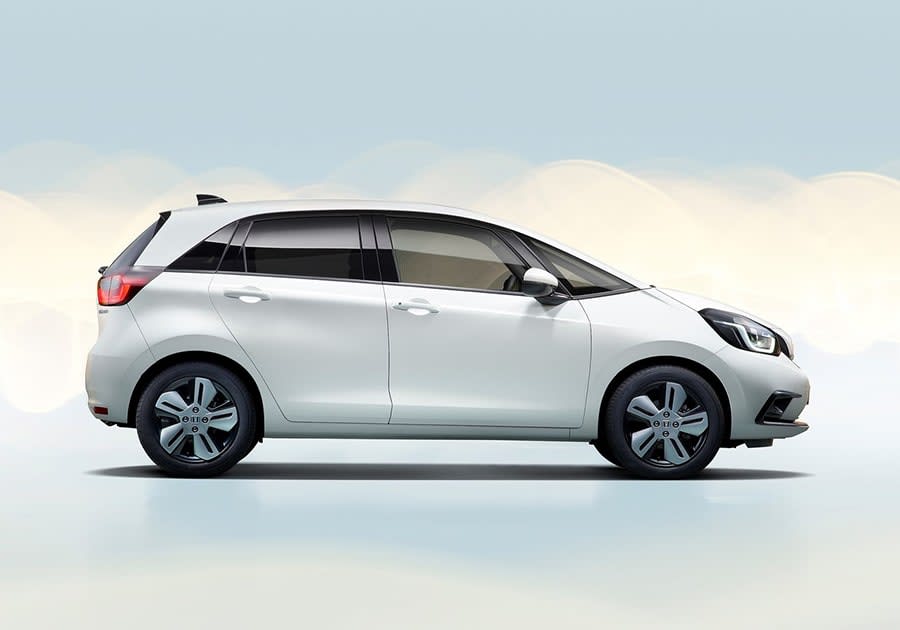
Key Features
The Jazz’s big selling (or leasing) points are its hybrid drivetrain and its excellent use of space in a compact package. Historically, the Jazz has had a perhaps-unfair reputation as a car aimed at older people, and this latest version – introduced in 2020 – has slightly funkier, more futuristic looks, although it’s still relatively restrained. Its interior is bang up to date too, with lots of cutting-edge tech to keep you informed and entertained. Under the bonnet is a 1.5-litre petrol engine attached to two electric motors and a battery. It’s a full hybrid, rather than a plug-in hybrid (PHEV), so while it can do short distances on electric power only, you can’t plug it in to recharge from the grid. However, that means it’s more affordable than an equivalent PHEV would be, and leasing prices are very competitive. There are three trim levels to choose from, as well as the Jazz Crosstar model, which has raised SUV-style suspension.
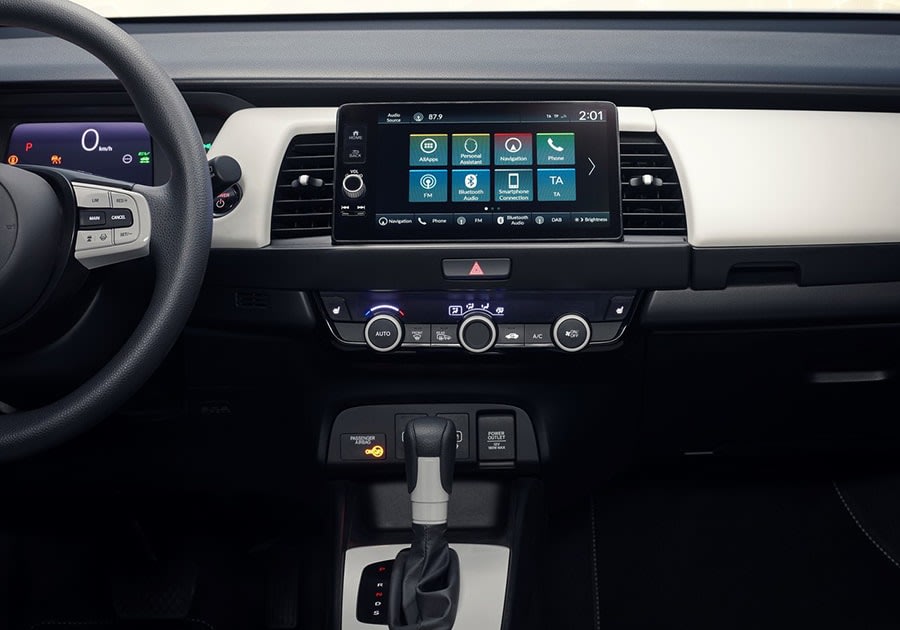
Performance & Drive
The Jazz is designed first and foremost as a city car, and this is where it’s at its best. Full hybrids tend to work best, and deliver the best fuel savings, in stop and start driving rather than motorway cruising, so by cutting the engine and seamlessly bringing back in when needed, you can keep your petrol bill down during urban runabouts.
The 1.5-litre engine works with two electric motors to develop a total of 109 horsepower. That’s enough to keep the jazz feeling sprightly at lower speeds while keeping the fuel burn to a minimum. We easily managed more than 60mpg around town, although if you do longer motorway runs, which won’t let the system recoup electrical energy as much, that will likely drop. A newly-developed continuously variable transmission (CVT) – which as far as most people are concerned is an automatic – works well and unobtrusively, although it will send the engine revs sky high if you try and accelerate hard.
Ride comfort is good, with lumps and bumps soaked up well by the suspension, but not at the expense of handling. You’d be pushing it to call the Jazz sporty, but it’s got decent body control through the bends and enough feedback through the steering wheel to feel composed and confident.
The taller Crosstar model sits higher, which makes for more comfort over rough road surfaces, but at the expense of some of that confidence through the bends.
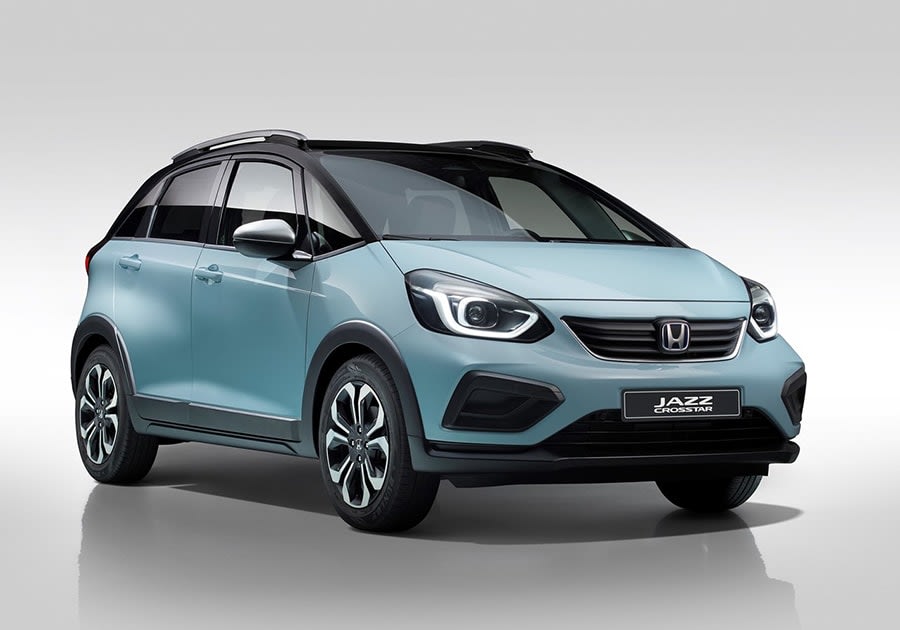
Running costs & Emissions
Leasing costs for the Jazz are very reasonable, especially considering the extra technology in its hybrid system. At the time of writing, you could jump into a Jazz for less than £180 a month, which is about the same as the Toyota Yaris hybrid. There are other rivals that will be a touch cheaper, but chances are they won’t have such a sophisticated engine bay.
With just one powertrain option, you’ll get up to 62.7mpg out of the Jazz according to official tests, although we found that’s much more realistic in urban driving than at motorway speeds. The Crosstar is a bit less efficient, claiming up to 58.8mpg.
If you’re looking at a Jazz as a company car, emissions from 102g/km mean Benefit-in-Kind tax brackets from 24% or 26% for the Crosstar model (2021/22).
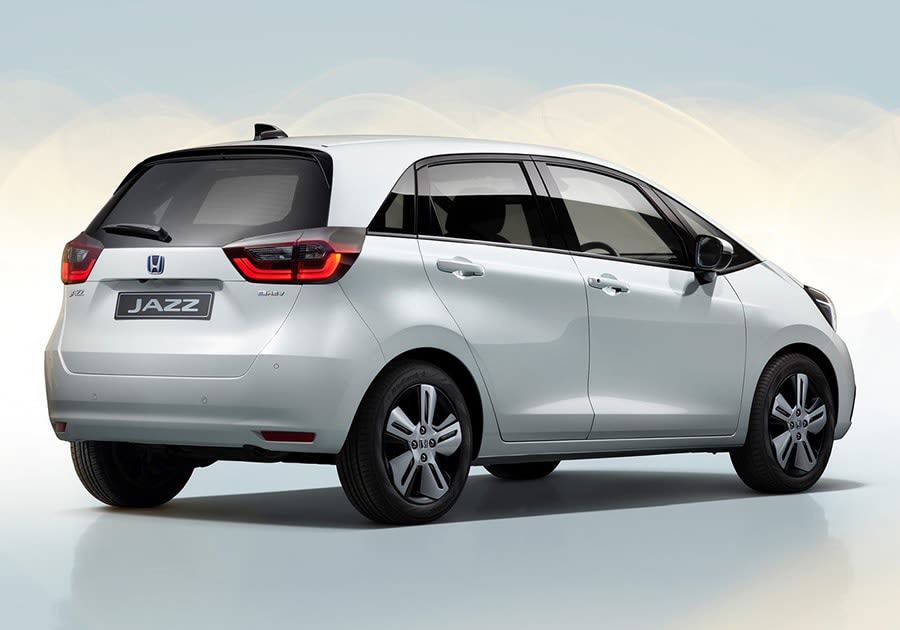
Interior & Technology
The interior design strikes a nice balance between modern and usable; there’s a snazzy digital display behind the steering wheel, and a touchscreen infotainment system on most models, but there are still good-old-fashioned buttons and dials to operate things like the air conditioning. General material and build quality is very good, although a few rivals, notably the Peugeot 208, can boast a more premium feel.
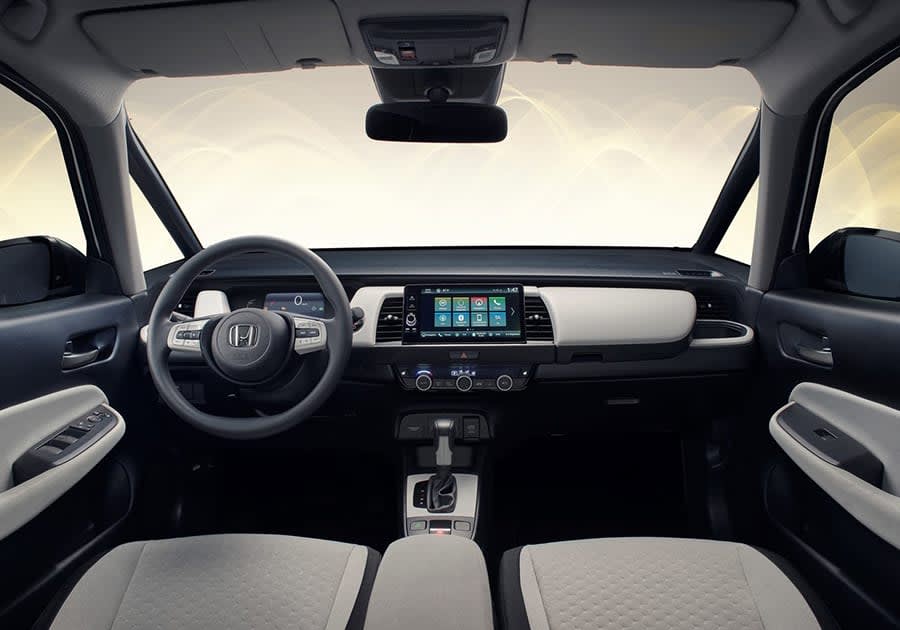
We’d avoid the entry-level SE trim, as it has a fairly rudimentary and small 5.0-inch touchscreen infotainment system. But all other models have a 9.0-inch interface with Apple CarPlay and Android Auto to let you hook up your smartphone and use it through the screen. That’s just as well, as to be honest the built-in Honda software isn’t that great; better to just plug your phone in and let your apps do all the necessary work. The Jazz Crosstar has an upgraded sound system with eight speakers, while all other models have just four.
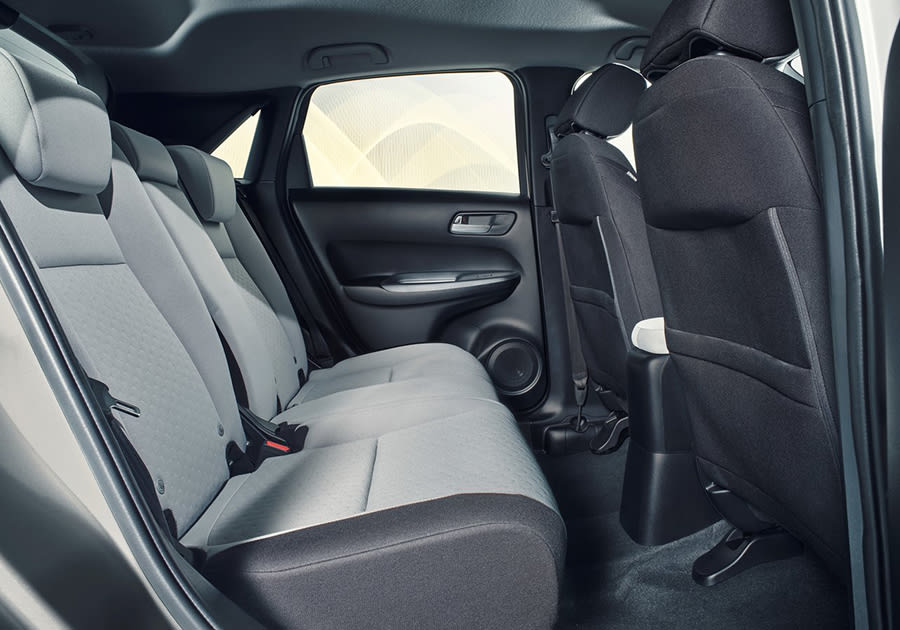
Practicality & Boot Space
The Jazz’s practicality is one of its best features, with just about every aspect brilliantly planned out and executed. The driving position is nice and high, with a commanding view ahead and excellent all-round visibility. All occupants will have loads of head and legroom despite the Jazz’s diminutive size, although as with all small cars, the middle seat in the back is a squeeze.
The party piece in the Jazz is its rear seat configuration, which Honda calls Magic Seats. They fold down flat in a 60/40 split, as seen in most rivals, but you can also fold the bases up to give you loads of room in the rear footwells. Need to carry a tall pot plant? No problem at all. This is more verstability than you’ll get in just about any rival, and it’s very clever.
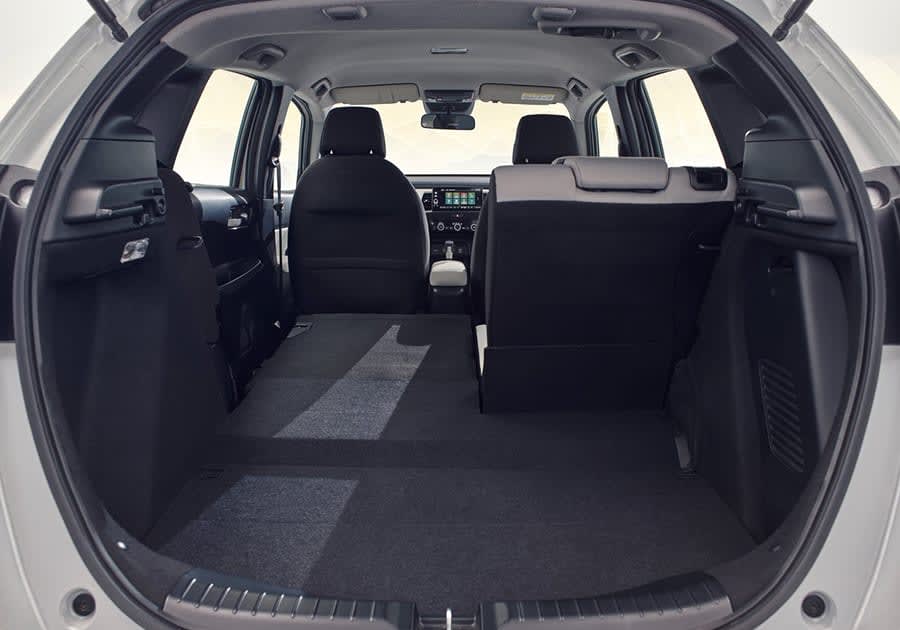
The boot is a decent size, at 304 litres, although you do get considerably more in the Renault Clio, which has 391 litres. The Crosstar model is smaller still at 298 litres. Fold the rear seats down though and the Jazz is much more capacious than the Clio, with a total of 1,205 litres.
On top of all that, there are loads of general storage areas, including cubby holes under the front centre armrest and in front of the gearstick, big door pockets, two glove boxes stacked in front of the passenger and two cup holders at either end of the dashboard, as well as one between the front seats.
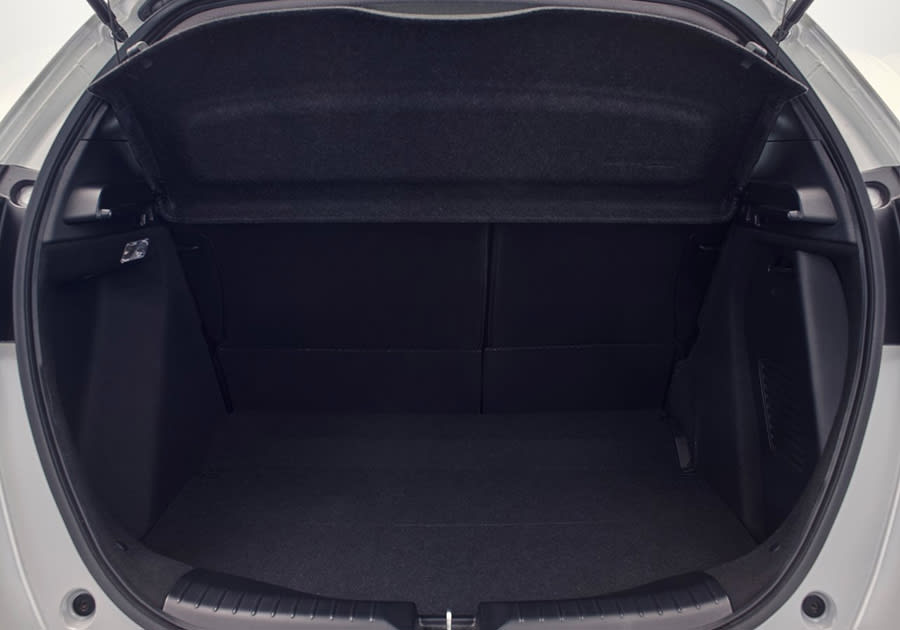
Safety
The Jazz was tested by safety organisation Euro NCAP in 2020, and scored the maximum five stars. All models come with plenty of modern safety features, including automatic emergency braking, which will intervene if you don’t react to an impending collision. Lane assist technology is standard too, and all cars get front, side and curtain airbags, as well as a knee airbag for the driver, and Isofix child-seat mounting points on the outer rear seats.
Optional safety kit includes a blind spot warning system and cross traffic monitoring, which will warn you of oncoming vehicles when you’re reversing out of a parking space. These are standard on the top-spec EX model.
Options
Honda offers three trim levels on the regular Jazz, and one on the Crosstar model.
The range starts with the relatively spartan SE, which has LED headlights and 15-inch steel wheels, as well as the smaller, more basic infotainment system, which has only Bluetooth and DAB radio. Upgrade to SR and you’ll get more features, including front and rear parking sensors, the larger infotainment system with wireless Apple CarPlay and Android Auto, and 15-inch alloy wheels.
The top-spec model is the EX, which adds keyless entry and engine start, sat-nav from Garmin, adaptive cruise control and heated front seats, as well as a rear-view camera for manoeuvring. It has 16-inch alloy wheels.
The Crosstar is only available in EX trim, which is broadly the same as described above, although it also has water-repellant upholstery and the upgraded sound system.
Options are relatively few, restricted to some external styling additions like chrome or coloured elements for the bumpers, and a few upholstery, paint and wheel choices.
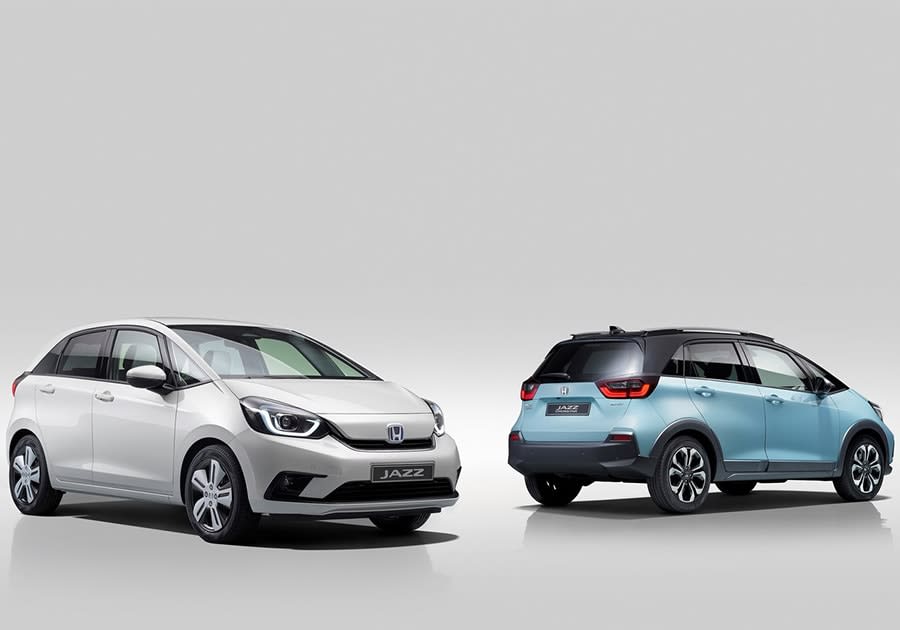
Rival Cars
The obvious hybrid rival for the Honda Jazz is Toyota’s Yaris, which has a more sophisticated hybrid system and is a bit more fun to drive than the Honda. However, it can’t touch the Jazz for practicality, so if that’s a priority then the Honda’s the one to go for.
You’ve also got an increasing number of rivals that have less effective mild-hybrid systems, including the market leader for this type of car, the Ford Fiesta. This again isn’t as practical as the Honda, but it’s brilliant to drive and has a broader choice of models.
If you want something fully electric then there are great choices like the Vauxhall e-Corsa and the Peugeot e-208, both of which also have petrol-powered models. Add to that list of potentials the Volkswagen Polo, Seat Ibiza and Skoda Fabia; there are plenty of talented superminis on the market.
Verdict & Next Steps
The Honda Jazz is a cracking little car, albeit one in a marketplace full of other cracking little cars. What the Honda does well is practicality, and it also makes a pretty good fist of just about everything else. There are rivals that are arguably better looking, or that can be had with full electric power, or are more fun to drive. For a sensible car that’s super-easy to drive and very efficient, with that brilliant flexible seating potential, then look no further than the Honda Jazz.
Where to next?
View latest Honda Jazz leasing deals - from just £178.22 per month inc VAT**
Looking for a great leasing deal? Check out our incredible range of car lease deals
New Hatchback? Read our latest Car Reviews and find the right model for you
Want to know more about leasing? Take a look at our comprehensive Leasing Guides
Interested in everything motoring? Why not catch up on all the latest Car Leasing News.
**Score based on Select’s unique meta score analysis, taking into account the UK’s top five leading independent car website reviews of the Honda Jazz
**Correct as of 02/11/2021. Based on 9 months initial payment, 5,000 miles over a 36 month lease. Initial payment equivalent to 9 monthly payments or £1603.98 Ts and Cs apply. Credit is subject to status.





















